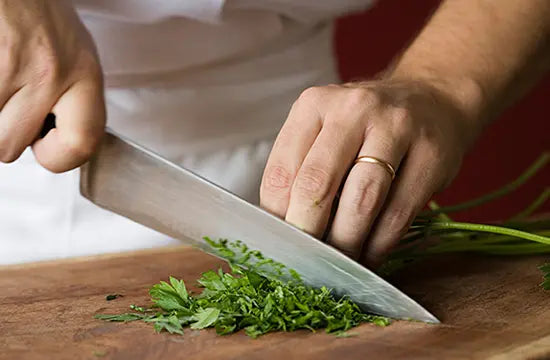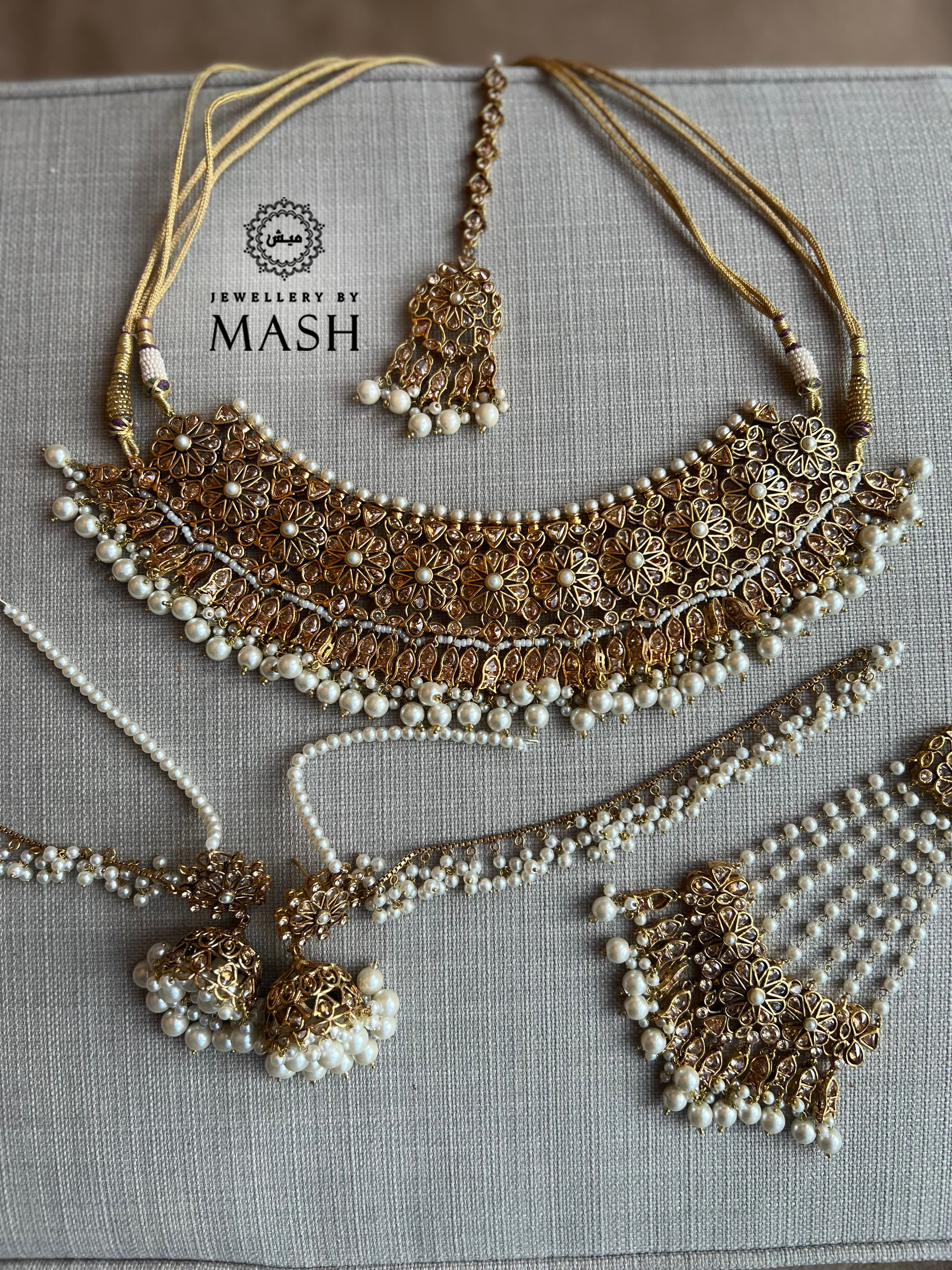When preparing food, keeping everything clean and safe is very important. One small mistake can lead to food contamination, which may cause serious health problems.
This is why food safety regulations are strict about what can and cannot be worn in the kitchen.
Jewelry might seem harmless, but it can be a hidden source of bacteria. Rings, bracelets, and watches collect dirt, grease, and germs, which can easily transfer to food.
Even washing hands regularly may not remove all bacteria trapped in jewelry. In some cases, jewelry can also tear gloves, making them ineffective in protecting food from contamination.
In the UK, the Food Standards Agency (FSA) has clear rules on hygiene in food preparation areas.
These rules help keep food safe and prevent cross-contamination. Anyone working in a kitchen, whether in a restaurant, bakery, or catering business, must follow these hygiene standards to ensure food remains safe to eat.
Understanding these rules is important for both professional chefs and home cooks who want to maintain the highest level of food hygiene.
Why Is Jewelry Restricted in Food Preparation?
Jewelry may look stylish, but in a food preparation area, it can be a serious hygiene and safety risk.
This is why food safety regulations strictly limit what can be worn while handling food. Here’s why jewelry is not allowed:
1. Jewelry Harbors Bacteria and Germs
Jewelry collects bacteria, dead skin cells, and food particles, making it a perfect place for germs to grow.
Even after washing hands, bacteria can remain trapped in ring crevices, watch straps, and bracelet links.
This increases the risk of foodborne illnesses, which can be dangerous for customers.
2. It Prevents Proper Handwashing and Glove Usage
Wearing rings, bracelets, or watches makes handwashing less effective. Soap and water may not reach all areas under the jewelry, leaving behind dirt and bacteria.
Also, when wearing gloves, rings and bracelets can tear the gloves, exposing food to unclean hands.
3. Risk of Physical Contamination
Loose jewelry such as rings, earrings, and bracelets can easily fall into food without being noticed.
This creates a choking hazard for customers and may even cause serious injury if swallowed.
This is why cross-contamination prevention is a key focus in food safety regulations.
4. Workplace Safety Concerns
In busy kitchens, jewelry can be dangerous. It may get caught in machinery, ovens, or slicing equipment, leading to serious injuries.
Rings and bracelets can also scratch surfaces, making it harder to maintain kitchen hygiene standards.
Because of these risks, the Food Standards Agency (FSA) and HACCP guidelines enforce strict rules about jewelry in food handling areas.
Now, let’s look at what type of jewelry is actually allowed when preparing food.
What Is the Only Allowed Jewelry When Handling Food?
In food preparation areas, the only jewelry that is allowed is a plain wedding band. This means a smooth, simple ring with no stones, grooves, or intricate designs.
Why Only a Plain Wedding Band?
Regulatory bodies like the Food Standards Agency (FSA) and HACCP (Hazard Analysis and Critical Control Points) set strict food hygiene standards to reduce contamination risks.
The Food Safety Act 1990 (UK) also requires businesses to maintain high hygiene levels, which includes restricting jewelry.
A plain wedding band is permitted because:
-
It has no crevices or stones where bacteria and food particles can hide.
-
It does not interfere with proper handwashing.
-
It won’t easily fall off, reducing physical contamination risks.
Why Are Other Types of Jewelry Not Allowed?
-
Rings with Stones or Grooves – These trap bacteria and food particles, making them difficult to clean.
-
Bracelets & Watches – They prevent proper hand hygiene and can easily touch food surfaces.
-
Necklaces & Chains – There’s a risk they fall into food, creating a choking hazard.
-
Earrings & Facial Jewelry – Dangling jewelry may detach and land in food.
By following these rules, food handlers help maintain restaurant hygiene guidelines and protect customers from food contamination risks.
Exceptions & Special Cases
While most jewelry is prohibited in food handling, there are a few exceptions in special cases.
Medical Alert Bracelets
Medical alert bracelets provide critical health information in emergencies. However, because they can trap bacteria and interfere with handwashing, food safety guidelines recommend that they be worn as a necklace or anklet instead.
This ensures that the medical information remains accessible while reducing food contamination risks.
Simple Stud Earrings
Some workplaces allow simple stud earrings that fit snugly against the earlobe. Unlike dangling earrings, they are less likely to fall into food.
However, policies vary across businesses, and some establishments ban all types of earrings for extra safety.
UK Food Industry Standards vs. International Regulations
In the UK, food safety is governed by the Food Standards Agency (FSA) and the Food Safety Act 1990, which strictly regulate what food handlers can wear.
The HACCP system also plays a role in identifying jewelry contamination risks.
Other countries have similar regulations:
-
In the United States, the FDA Food Code bans all jewelry except a plain wedding band.
-
The World Health Organization (WHO) sets global food hygiene standards, emphasizing the importance of proper handwashing and cross-contamination prevention.
While different countries may have slightly varying policies, the general rule worldwide remains the same—minimize jewelry in food preparation areas to protect public health.
Best Practices for Food Handlers & Jewelry Safety

Following proper hygiene practices is essential for maintaining food safety. Since jewelry is a potential source of contamination, food handlers should take extra precautions to keep their hands and work areas clean and safe.
1. Maintain Proper Hygiene
-
Frequent Handwashing: Food handlers should wash their hands before and after handling food, after touching raw ingredients, and after any activity that may introduce germs.
-
Avoid Nail Polish & False Nails: Nail polish and artificial nails can trap bacteria and may chip into food, creating a contamination risk.
-
Regular Cleaning of Allowed Jewelry: If a plain wedding band is worn, it should be washed and sanitized frequently to reduce bacteria buildup.
- See complete guide on cleaning gold and silver.
2. Safe Storage of Jewelry at Work
Since most jewelry is not allowed during food preparation, it is important to store valuable items securely:
-
Use a Personal Locker: Many workplaces provide lockers or secure storage areas for personal belongings.
-
Leave Jewelry at Home: The safest option is to avoid bringing jewelry to work altogether.
-
Keep Rings in a Case: If removing a wedding band, place it in a small case to avoid misplacing it.
3. Understanding the Limitations of Protective Gloves
Wearing gloves does not replace proper hand hygiene. In fact, if worn over jewelry, gloves can become less effective:
-
Gloves Can Tear Easily: Rings, bracelets, and watches can cause tiny tears in gloves, increasing the risk of food contamination.
-
Bacteria Can Grow Under Gloves: If hands are not properly washed before wearing gloves, germs and moisture can build up underneath.
-
Gloves Should Be Changed Frequently: Food handlers should replace gloves whenever they become damaged, dirty, or after handling raw foods.
By following hygiene guidelines, securely storing jewelry, and using gloves properly, food handlers can help maintain food safety standards and prevent contamination risks.
Common Questions About Jewelry in the Kitchen
Can I Wear a Wedding Ring While Cooking in a Restaurant?
In most professional kitchens, only a plain wedding band is allowed. Rings with stones, engravings, or grooves can trap bacteria and make handwashing less effective.
Some restaurants may have stricter policies and require all rings to be removed. It’s always best to follow workplace safety guidelines to prevent cross-contamination.
What Happens If Jewelry Falls Into Food?
Jewelry that falls into food can pose serious risks, including:
-
Physical contamination: A ring, earring, or bracelet could chip a tooth or cause choking if accidentally consumed.
-
Bacterial contamination: Jewelry harbors germs and dirt, which can transfer to food and lead to foodborne illnesses.
-
Legal consequences: Restaurants and food businesses must comply with the Food Safety Act 1990 (UK). If a customer finds jewelry in their food, it could result in fines, health inspections, or even closure.
Are Silicone Rings Allowed in Food Preparation?
Silicone rings are becoming popular alternatives to metal wedding bands, but most food safety regulations do not officially approve them.
While they are less likely to cause physical hazards, they can still trap bacteria and interfere with handwashing.
Some workplaces may allow them, but it’s best to check with food hygiene regulations.
While traditional rings pose hygiene risks, some opt for silicone alternatives or even permanent jewelry options that require minimal maintenance.
How Does Jewelry Affect Food Hygiene?
Jewelry can compromise food hygiene in multiple ways:
-
Traps bacteria and pathogens, increasing the risk of foodborne illnesses.
-
Interferes with handwashing, making it harder to remove dirt and germs.
-
Increases risk of cross-contamination, especially when handling raw ingredients.
-
Creates a safety hazard if caught in kitchen equipment or if pieces break off into food.
To maintain the highest food hygiene standards, food handlers should remove all jewelry except a plain wedding band and follow proper food safety regulations.
Protecting and Caring for Your Jewelry
Even though jewelry is not allowed in professional kitchens, proper cleaning and storage are essential for maintaining its hygiene and longevity.
Here’s how food handlers can keep their jewelry safe while working:
Cleaning and Storing Jewelry Properly
-
Wash your jewelry regularly using mild soap and warm water to remove dirt and bacteria.
-
Use a soft brush to clean hard-to-reach areas, especially for rings with engravings.
-
Store jewelry in a clean, dry place, such as a sealed jewelry box or pouch, before starting work.
-
Avoid leaving rings or bracelets in food prep areas where they can be contaminated.
Alternatives Like Sterile Medical Alert Bracelets for Food Workers
For those who need to wear medical alert bracelets, food safety guidelines recommend:
-
Wearing it as a necklace or anklet instead of on the wrist.
-
Opting for easy-to-clean, smooth designs without engravings or crevices.
-
Choosing a sterile, food-safe material, such as silicone or stainless steel.
- Some workplaces allow non-traditional materials like stainless steel for durability, but it's important to whether stainless steel good for jewellery while preparing food.
JewelleryByMash’s Durable, High-Quality Jewelry for Professionals
When not at work, chefs and food handlers can still enjoy stylish, high-quality jewelry. JewelleryByMash offers durable and easy-to-clean pieces, ensuring that professionals can wear elegant accessories outside the kitchen.
Whether you need minimalist wedding bands or custom-designed jewelry, JewelleryByMash provides options suited for everyday wear without compromising on style and durability.
Conclusion
Wearing jewelry in the kitchen poses serious hygiene and safety risks, which is why food safety regulations strictly limit what food handlers can wear.
In the UK, only plain wedding bands without stones or intricate designs are allowed under the Food Safety Act 1990 and HACCP guidelines.
Other jewelry, such as rings with stones, bracelets, and watches, can trap bacteria, interfere with handwashing, and pose contamination risks.
For those who require medical alert bracelets, food safety standards recommend wearing them as a necklace or anklet.
Some workplaces may allow small stud earrings, but policies vary. Following best hygiene practices, such as frequent handwashing and proper jewelry storage, ensures a safe and clean food environment.
By complying with these food industry standards, kitchen staff can maintain high hygiene levels while protecting consumers.
And when not at work, professionals can still express their style with durable, high-quality jewelry from JewelleryByMash, ensuring elegance without compromising on safety.



